
Yamanashi: The Heart of Japan's Natural Beauty and Culture
Discover Yamanashi, Japan's hidden gem, where natural beauty and cultural heritage converge with breathtaking views of Mount Fuji, exquisite wines, and delightful local cuisine.
Nestled in the Chubu region of Japan, Yamanashi offers a scenic escape with its stunning landscapes and rich cultural heritage. Known for its breathtaking views of Mount Fuji, Yamanashi is a haven for nature lovers and adventure seekers alike. Visitors can enjoy hiking trails, hot springs, and picturesque lakes that dot the region. Don't miss the chance to visit Lake Kawaguchi, one of the Fuji Five Lakes, which provides a perfect spot for reflection and relaxation. Yamanashi is also famous for its vineyards and wineries, producing some of Japan's finest wines. The region's unique climate and fertile soil make it ideal for grape cultivation. Wine enthusiasts can take a tour through the vineyards and enjoy wine tastings at local wineries. The Koshu wine, in particular, is a must-try. For history buffs, Yamanashi offers a glimpse into Japan's past with its ancient temples and shrines. The Shosenkyo Gorge, with its dramatic rock formations and crystal-clear waters, is another must-visit site that showcases the natural beauty of the area. Additionally, the region is known for its delicious local cuisine, including Hoto noodles and fresh fruits like peaches and grapes.
Local tips in Yamanashi
- Visit during spring or autumn for the best weather and scenic views.
- Rent a bicycle to explore the vineyards and countryside at your own pace.
- Try the local specialty, Hoto noodles, at a traditional restaurant.
- Stay in a ryokan (traditional inn) to experience Japanese hospitality and hot springs.
- Bring a good camera to capture the stunning landscapes and Mount Fuji.
Yamanashi: The Heart of Japan's Natural Beauty and Culture
Nestled in the Chubu region of Japan, Yamanashi offers a scenic escape with its stunning landscapes and rich cultural heritage. Known for its breathtaking views of Mount Fuji, Yamanashi is a haven for nature lovers and adventure seekers alike. Visitors can enjoy hiking trails, hot springs, and picturesque lakes that dot the region. Don't miss the chance to visit Lake Kawaguchi, one of the Fuji Five Lakes, which provides a perfect spot for reflection and relaxation. Yamanashi is also famous for its vineyards and wineries, producing some of Japan's finest wines. The region's unique climate and fertile soil make it ideal for grape cultivation. Wine enthusiasts can take a tour through the vineyards and enjoy wine tastings at local wineries. The Koshu wine, in particular, is a must-try. For history buffs, Yamanashi offers a glimpse into Japan's past with its ancient temples and shrines. The Shosenkyo Gorge, with its dramatic rock formations and crystal-clear waters, is another must-visit site that showcases the natural beauty of the area. Additionally, the region is known for its delicious local cuisine, including Hoto noodles and fresh fruits like peaches and grapes.
When is the best time to go to Yamanashi?
Iconic landmarks you can’t miss
Oshino Hakkai
Discover the serene beauty of Oshino Hakkai, where crystal-clear ponds meet stunning views of Mount Fuji in a picturesque Japanese village.

Fuji-Q Highland
Discover the thrill of Fuji-Q Highland, Japan's premier amusement park, featuring breathtaking views of Mount Fuji and exhilarating rides.

Hottarakashi Onsen
Experience the serenity of Hottarakashi Onsen, a stunning spa garden in Yamanashi, perfect for relaxation and rejuvenation amidst nature's beauty.

Kawaguchiko Tenjozan Park
Discover stunning vistas of Mt. Fuji at Kawaguchiko Tenjozan Park, a serene escape with lush gardens and scenic trails.

Fuefukigawa Fruit Park
Explore Fuefukigawa Fruit Park, a family-friendly destination in Yamanashi, Japan, that celebrates fruit picking and the beauty of nature.

Mt. Fuji Panoramic Ropeway
Experience breathtaking views of Mt. Fuji and explore the stunning landscapes of Fujikawaguchiko with the Mt. Fuji Panoramic Ropeway.

Arakurayama Sengen Park
Experience breathtaking views of Mount Fuji and the stunning beauty of cherry blossoms at Arakurayama Sengen Park, a must-visit tourist attraction in Japan.

Kawaguchiko Music Forest Museum
Explore the magical world of music and art at Kawaguchiko Music Forest Museum, featuring stunning music boxes and breathtaking views of Mount Fuji.
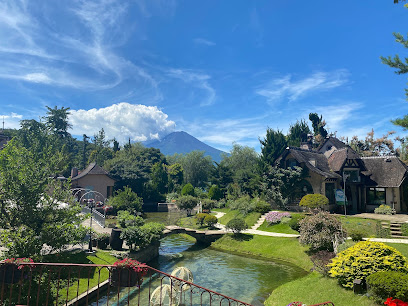
Saiko Iyashi-no-Sato Nenba (Traditional Japanese Village)
Discover the charm of traditional Japan at Saiko Iyashi-no-Sato Nenba, an open-air museum showcasing authentic rural life and stunning views of Mount Fuji.

Lake Kawaguchi Maple Corridor
Experience nature's artistry at Lake Kawaguchi Maple Corridor, where vibrant autumn colors meet stunning views of Mt. Fuji in a tranquil setting.

Shosenkyo
Explore the majestic Shosenkyo gorge, a breathtaking natural wonder in Yamanashi, Japan, perfect for hiking and immersing in nature's beauty.
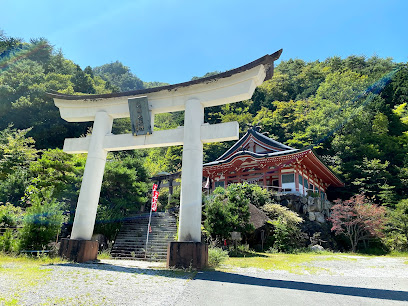
Shinobi No Sato Ninja Village
Explore the thrilling world of ninjas at Shinobi No Sato Ninja Village, where adventure meets Japanese culture in a unique theme park setting.

Kubota Itchiku Art Museum
Discover the mesmerizing world of Itchiku Kubota's textile art at the Kubota Itchiku Art Museum, surrounded by stunning views of Mount Fuji.

Akeno Sunflower Field
Discover the breathtaking Akeno Sunflower Field in Yamanashi, where a vibrant sea of sunflowers creates a stunning backdrop for unforgettable summer memories.

Fujisan World Heritage Center
Explore the cultural and natural wonders of Mount Fuji at the Fujisan World Heritage Center - your gateway to a majestic experience in Japan.

Unmissable attractions to see
Fuji-Q Highland
Discover the exhilarating rides and stunning views of Fuji-Q Highland, an amusement park that captivates tourists with thrills and cultural experiences near Mount Fuji.

EXPASA Ashigara Parking Area (Down)
Discover the serene EXPASA Ashigara Parking Area, a perfect rest stop in Shizuoka with local flavors, stunning views, and a welcoming atmosphere.

Shiraito Falls
Experience the breathtaking beauty of Shiraito Falls, a serene natural wonder at the foot of Mount Fuji in Shizuoka, Japan.

Mount Fuji
Experience the breathtaking beauty and cultural significance of Mount Fuji, Japan's highest peak and a UNESCO World Heritage Site.

Fujisan Hongu Sengen Taisha Shrine
Explore the serene beauty and cultural significance of Fujisan Hongu Sengen Taisha Shrine, a must-visit Shinto shrine near Mount Fuji.

Kawaguchiko Tenjoyama Park
Discover the natural beauty of Kawaguchiko Tenjoyama Park with stunning views of Mount Fuji and Lake Kawaguchi, an ideal spot for relaxation and adventure.

Fuefukigawa Fruit Park
Discover the sweet delights of Fuefukigawa Fruit Park, a vibrant theme park in Yamanashi with fresh fruit-picking, beautiful landscapes, and family fun.

Onsen - Fuji Yurari Hot Spring
Experience tranquility at Fuji Yurari Hot Spring, a serene onsen in Yamanashi with stunning views of Mt. Fuji, outdoor baths, and rejuvenating spa treatments.

Mitama Hot Spring
Discover ultimate relaxation at Mitama Hot Spring, a tranquil onsen retreat in Yamanashi offering soothing baths, revitalizing massages, and delicious local cuisine.

Arakura Fuji Sengen Shrine
Discover the spiritual beauty of Arakura Fuji Sengen Shrine, a serene Shinto shrine offering breathtaking views of Mount Fuji and rich historical significance.
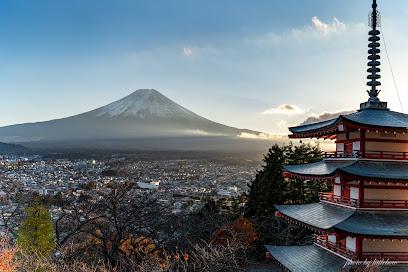
Sun Meadows Kiyosato Ski Area
Experience the thrill of winter sports at Sun Meadows Kiyosato, a premier ski resort in Yamanashi with breathtaking views and family-friendly activities.

Nippara Limestone Caves
Discover the enchanting Nippara Limestone Caves in Okutama, Tokyo - a natural wonder showcasing breathtaking geology and serene landscapes.

Erinji
Experience tranquility and spiritual reflection at Erinji Temple, a stunning Buddhist sanctuary in the heart of Koshu, Yamanashi.
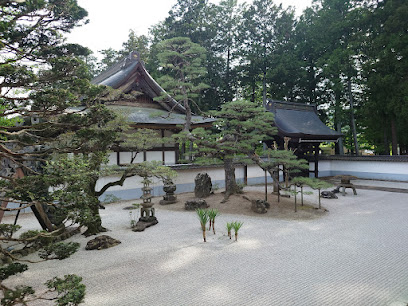
Kawaguchi Asama Shrine
Discover tranquility at Kawaguchi Asama Shrine, a stunning Shinto shrine with breathtaking views of Mount Fuji in Yamanashi, Japan.

Fruit Spa PukuPuku
Experience rejuvenation at Yamanashi's Fruit Spa PukuPuku, where nature meets wellness in a serene outdoor setting.

Essential places to dine
Hoto Funari Fruit line ave
Experience authentic Japanese cuisine at Hoto Funari, where traditional flavors meet local ingredients in Yamanashi's scenic setting.

皆吉
Experience authentic Japanese cuisine at 皆吉 in Yamanashi, where traditional flavors meet regional specialties.

蔵元ごはん&カフェ 酒蔵 櫂
Experience the essence of Japanese culture through authentic cuisine at Sakagura Kai in Yamanashi.

のんきばぁーば
Discover the heartwarming flavors of Yamanashi at のんきばぁーば, where traditional Hoto noodles steal the show.

FUNARI
Experience the authentic taste of Yamanashi at FUNARI, where rich Hoto noodles meet warm hospitality in a cozy setting.

Akafuji
Discover authentic Japanese cuisine at Akafuji in Fuefuki – renowned for its hot pot and hoto noodles amidst serene surroundings.

展望・星屑レストラン ガイア
Discover fresh flavors at Gaia Restaurant in Yamanashi - where vibrant salads meet stunning views.

West Mountain
Discover the perfect blend of Western cuisine and Japanese flavors at West Mountain in Yamanashi.

Satoyamatei
Discover the essence of Yamanashi at Satoyamatei, where authentic hoto noodles are served in a warm and inviting atmosphere.

Sushi Kappo Izuya
Discover authentic Japanese flavors at Sushi Kappo Izuya in Yamanashi – a delightful destination for sushi lovers seeking quality and tradition.

気まぐれ屋
Experience authentic Japanese cuisine at 気まぐれ屋 in Yatsubo, famed for its Chicken Curry-Rice and warm hospitality.

ディープジョティ
Experience authentic Indian flavors in Yamanashi's charming Deep Jyoti restaurant, where every dish tells a story.

玉寿し・すしやのスパゲッティ
Experience a unique fusion of Japanese sushi and Italian pasta at 玉寿し・すしやのスパゲッティ in Yamanashi.

らーめんテラス好吃
Discover authentic Japanese ramen flavors at らーめんテラス好吃 in Yamanashi – where every bowl tells a story of tradition.

Delhi Bay
Experience authentic Japanese curry at Delhi Bay in Yamanashi – where flavor meets tradition in every bite.

Markets, malls and hidden boutiques
Koshu Yume Kouji
Discover the vibrant shopping and cultural experiences at Koshu Yume Kouji, a unique destination in Kofu, Yamanashi, perfect for tourists.
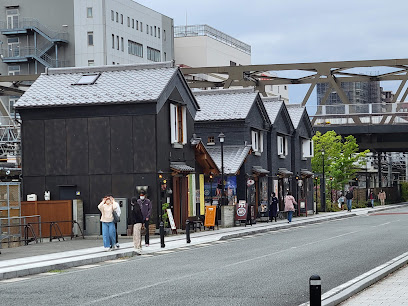
Ichiyama Mart Yamanashi
Explore local flavors and fresh produce at Ichiyama Mart Yamanashi, your gateway to Yamanashi's culinary delights.

Across Plaza Yamanashi
Explore Across Plaza Yamanashi, the ultimate shopping mall in Yamanashi, Japan, blending shopping, dining, and entertainment in a vibrant atmosphere.

Amanoshoten
Discover a quiet retreat at Amanoshoten, Yamanashi's beloved book store featuring local literature and a cozy atmosphere.

くぼたニコニコ堂
Discover the charm of くぼたニコニコ堂, a hidden gem in Yamanashi offering exquisite models and musical instruments for enthusiasts and collectors alike.

買取大吉 山梨小原西店 ブランド・金・貴金属・ロレックス・時計買取
Explore Kaito Daikichi Yamanashi Kobaranishi for unique thrift treasures, luxury brands, and unbeatable deals in Yamanashi.

Fairy wish ふしぎの森の洋品店
Experience the magic of Yamanashi at Fairy Wish Boutique, where whimsical treasures and handcrafted items await every traveler.

YURT
Explore YURT in Yamanashi for unique thrift finds and sustainable fashion treasures that narrate stories of style and eco-conscious living.

Kichi
Explore Kichi in Fuefuki, Yamanashi - your destination for unique vintage clothing and accessories!

甲州屋土産品店
Explore Koshuyadori Souvenir Store in Yamanashi for authentic local crafts, delicious treats, and unique gifts that embody Japanese culture.

アメミヤ衣料品店
Explore the charm of Japanese fashion at アメミヤ衣料品店 in Yamanashi, where tradition meets modern style for a unique shopping experience.
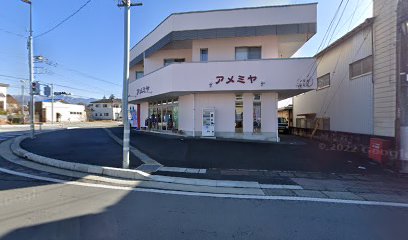
リリリ・アシュレイ(lilili ashley)米粉パン工房
Experience the unique flavors of gluten-free rice flour bread at Lilili Ashley, a charming bakery in the heart of Yamanashi, Japan.

ブックマート山梨市店
Uncover literary treasures at the quaint ブックマート山梨市店, Yamanashi's beloved used book store with a rich selection of pre-loved titles.

万力公園内 売店
Discover the charm of 万力公園内 売店, a cozy store nestled in Yamanashi's Manriki Park, perfect for snacks and relaxation amidst nature.

Arles
Explore the exquisite home goods at Arles in Yamanashi, where traditional craftsmanship meets modern design in a charming shopping atmosphere.

Essential bars & hidden hideouts
Paradise
Experience the vibrant nightlife of Fuefuki at Paradise, a cozy bar offering local drinks and a welcoming atmosphere.

音酒場キーストーン
Discover the lively nightlife and unique drinks at 音酒場キーストーン, a bar in Fuefuki, Yamanashi that captures the essence of Japanese social culture.

L.River
Discover L.River, a cozy bar in Yamanashi offering a delightful selection of local drinks and a warm, inviting ambiance perfect for relaxation and socializing.
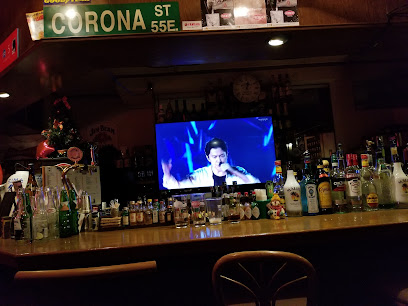
パブ タニヤ
Discover the vibrant nightlife at パブ タニヤ in Fuefuki, a bar that offers an authentic taste of Japanese culture and local spirits.

shot bar & cafe maret みずき
Discover the charm of Shot Bar & Cafe Maret みずき, a perfect blend of local flavors and inviting ambiance in Yamanashi, Japan.

マニラ
Experience the vibrant nightlife at マニラ in Fuefuki, where great drinks and lively atmosphere create unforgettable memories.

Bar山鳥
Discover tranquility and local flavors at Bar山鳥, a charming bar in Yamanashi perfect for unwinding after your adventures.

Bar de Ojar
Discover the cozy ambiance and local flavors at Bar de Ojar, a hidden gem in Fuefuki, Yamanashi, perfect for an evening of relaxation and enjoyment.

Cafe & Bar Kardia
Discover the cozy ambiance and exquisite cocktails at Cafe & Bar Kardia, a hidden gem in Yamanashi perfect for relaxed evenings.

ゆかいなばーBestie
Discover the vibrant nightlife at ゆかいなばーBestie, where local culture meets cozy ambiance in Fuefuki, Japan.
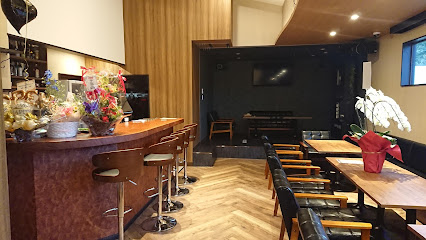
パブ マオ
Experience the lively ambiance and local flavors at パブ マオ, Fuefuki's must-visit pub for an authentic Japanese nightlife experience.

pataya (パタヤ)
Experience the vibrant nightlife at Pataya, a popular pub in Fuefuki, where local flavors and a lively atmosphere come together.

カラオケボックス&海賊shot bar 宴 Utage
Join the vibrant nightlife at Utage Karaoke Box & Pirate Shot Bar in Fuefuki, where cocktails, karaoke, and fun await you!

ZERO Style Bar HOTARU
Discover the vibrant nightlife at ZERO Style Bar HOTARU, a must-visit bar in Fuefuki, Yamanashi, perfect for socializing and savoring unique drinks.

Arch
Discover Arch, a charming bar in Yamanashi, where local flavors and warm hospitality create unforgettable memories.
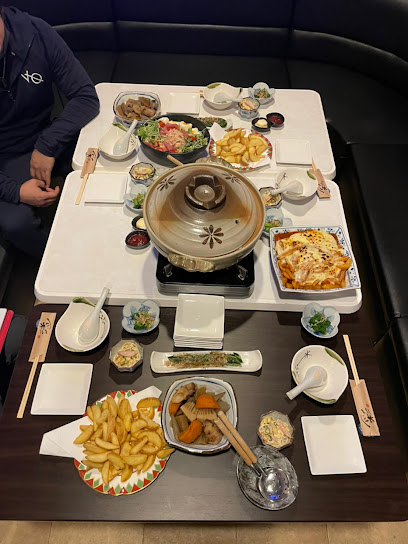
Local Phrases about Yamanashi
-
- Helloこんにちは
[Konnichiwa] - Goodbyeさようなら
[Sayonara] - Yesはい
[Hai] - Noいいえ
[Iie] - Please/You're welcomeどうぞ
[Douzo] - Thank youありがとう
[Arigatou] - Excuse me/Sorryすみません
[Sumimasen] - How are you?お元気ですか?
[Ogenki desu ka?] - Fine. And you?元気です。あなたは?
[Genki desu. Anata wa?] - Do you speak English?英語を話せますか?
[Eigo o hanasemasu ka?] - I don't understandわかりません
[Wakarimasen]
- Helloこんにちは
-
- I'd like to see the menu, pleaseメニューを見せてください
[Menyu o misete kudasai] - I don't eat meat肉は食べません
[Niku wa tabemasen] - Cheers!乾杯!
[Kanpai] - I would like to pay, pleaseお会計をお願いします
[Okaikei o onegaishimasu]
- I'd like to see the menu, pleaseメニューを見せてください
-
- Help!助けて!
[Tasukete!] - Go away!行って!
[Itte!] - Call the Police!警察を呼んで!
[Keisatsu o yonde!] - Call a doctor!医者を呼んで!
[Isha o yonde!] - I'm lost道に迷っています
[Michi ni mayotte imasu] - I'm ill具合が悪いです
[Guai ga warui desu]
- Help!助けて!
-
- I'd like to buy...買いたいです...
[Kaitai desu...] - I'm just looking見てるだけです
[Miteru dake desu] - How much is it?いくらですか?
[Ikura desu ka?] - That's too expensiveそれは高すぎます
[Sore wa takasugimasu] - Can you lower the price?値段を下げてもらえますか?
[Nedan o sagete moraemasu ka?]
- I'd like to buy...買いたいです...
-
- What time is it?今何時ですか?
[Ima nanji desu ka?] - It's one o'clock1時です
[Ichiji desu] - Half past (10)10時半
[Juji han] - Morning朝
[Asa] - Afternoon午後
[Gogo] - Evening夕方
[Yuugata] - Yesterday昨日
[Kinou] - Today今日
[Kyou] - Tomorrow明日
[Ashita] - 1一
[Ichi] - 2二
[Ni] - 3三
[San] - 4四
[Shi] - 5五
[Go] - 6六
[Roku] - 7七
[Nana] - 8八
[Hachi] - 9九
[Kyu] - 10十
[Ju]
- What time is it?今何時ですか?
-
- Where's a/the...?...はどこですか?
[...wa doko desu ka?] - What's the address?住所は何ですか?
[Juusho wa nan desu ka?] - Can you show me (on the map)?地図で見せてもらえますか?
[Chizu de misete moraemasu ka?] - When's the next (bus)?次の(バス)はいつですか?
[Tsugi no (basu) wa itsu desu ka?] - A ticket (to ....)チケット(へ...)
[Chiketto (e...)]
- Where's a/the...?...はどこですか?
History of Yamanashi
-
Yamanashi's history stretches back to ancient times, with the area being part of the Kai Province. Archaeological findings suggest that people have lived in this region since the Jomon period (approximately 14,000–300 BCE). Early settlers benefited from the fertile lands and abundant water sources provided by the Kofu Basin and surrounding mountains.
-
The Takeda clan, one of the most powerful samurai families in Japan, ruled over Yamanashi during the Sengoku period (15th to 17th centuries). Takeda Shingen, perhaps the most famous member of the clan, was a renowned military leader and strategist. Under his rule, the region flourished economically and culturally. Shingen's legacy is still celebrated in Yamanashi, with numerous festivals and monuments dedicated to his memory.
-
One of the most significant historical events involving Yamanashi was the Battle of Kawanakajima, fought between Takeda Shingen and Uesugi Kenshin. Although the battle itself took place in present-day Nagano Prefecture, it had profound implications for Yamanashi. This series of battles, occurring between 1553 and 1564, underscored the strategic importance of the region and showcased the military prowess of Takeda Shingen.
-
During the Edo period (1603-1868), Yamanashi experienced significant economic development. The region became famous for its silk production and viticulture. The fertile land and favorable climate made it an ideal location for growing grapes, leading to the establishment of Japan's wine industry. The Koshu grape, native to Yamanashi, became particularly well-known and remains a symbol of the region's agricultural heritage.
-
The Meiji Restoration, beginning in 1868, brought about rapid modernization and industrialization throughout Japan, including Yamanashi. The completion of the Chuo Main Line railway in 1903 connected Yamanashi to Tokyo and other major cities, facilitating the movement of goods and people. This period also saw the development of educational institutions and infrastructure, further integrating Yamanashi into the national framework.
-
World War II brought significant challenges to Yamanashi, including air raids and economic hardship. However, the post-war period was marked by rapid reconstruction and growth. The region's agriculture and wine industries rebounded, and new industries such as electronics and tourism emerged. Yamanashi also became a popular destination for both domestic and international tourists, drawn by its natural beauty and historical sites.
-
Yamanashi is rich in cultural heritage, with numerous festivals and traditions that reflect its historical significance. The Shingen-ko Festival, held annually in April, is one of the largest historical reenactments in Japan, celebrating the life and achievements of Takeda Shingen. Other notable events include the Fujiyoshida Fire Festival, which marks the end of the climbing season on Mount Fuji, and the Koshu Wine Festival, highlighting the region's viticultural legacy.
-
Yamanashi is home to some of Japan's most stunning natural landscapes, including parts of the iconic Mount Fuji and the Fuji Five Lakes. In 2013, Mount Fuji was designated a UNESCO World Heritage Site, recognizing its cultural and spiritual significance. The surrounding area, including Yamanashi, benefits from this designation, attracting visitors who come to experience its natural beauty and historical depth.
Yamanashi Essentials
-
Yamanashi is located in the Chubu region of Japan, and the most convenient way to get there is via Tokyo. The nearest major airport is Narita International Airport in Tokyo. From Tokyo, you can take a train from Shinjuku Station to Kofu Station, the capital of Yamanashi Prefecture, which typically takes around 90 minutes to 2 hours on the Azusa Limited Express. Alternatively, you can take a highway bus from Shinjuku Expressway Bus Terminal to Kofu, which takes about 2 hours.
-
Yamanashi offers several transportation options to explore the region. The JR Chuo Line connects major cities like Kofu, Otsuki, and Isawa Onsen. Local buses are available to reach attractions like Mt. Fuji and the Five Lakes area. Rental cars are a popular option for more flexibility, especially for visiting remote areas. Bicycles can also be rented in some towns for an eco-friendly way to explore.
-
The official currency in Japan is the Japanese Yen (JPY). Credit cards are widely accepted in hotels, restaurants, and larger stores, but it is advisable to carry cash, especially in smaller establishments and rural areas. ATMs that accept international cards can be found in convenience stores like 7-Eleven and Lawson throughout Yamanashi.
-
Yamanashi is generally a safe destination for tourists. However, it is always advisable to take standard precautions such as keeping an eye on your belongings in crowded places and avoiding isolated areas at night. There are no specific high-crime areas targeting tourists, but staying vigilant is always recommended.
-
In case of emergency, dial 110 for police assistance and 119 for fire or medical emergencies. English-speaking operators are generally available. It is recommended to have travel insurance that covers medical emergencies. For minor health issues, pharmacies (薬局 yakkyoku) are available in towns and cities where you can purchase over-the-counter medications.
-
Fashion: Do dress modestly, especially when visiting religious sites. Avoid wearing overly revealing clothing. Religion: Do respect local customs and traditions. Always remove your shoes when entering temples and shrines. Public Transport: Do be respectful and quiet on public transport. Refrain from talking on your phone or eating. Greetings: Do greet people with a slight bow; it is a sign of respect. Eating & Drinking: Do try local delicacies and accept food offerings graciously. Don’t tip in restaurants, as it is not customary in Japan.
-
To experience Yamanashi like a local, visit traditional markets and sake breweries. Participate in local festivals such as the Shingen-ko Festival in Kofu, which celebrates the samurai warlord Takeda Shingen. Don't miss out on trying Houtou, a local noodle dish, and the region's famous fruits like peaches and grapes. For a unique experience, consider staying at a ryokan (traditional Japanese inn) and soaking in an onsen (hot spring).
Trending Landmarks in Yamanashi
-
Oshino Hakkai
-
Fuji-Q Highland
-
Hottarakashi Onsen
-
Kawaguchiko Tenjozan Park
-
Fuefukigawa Fruit Park
-
Mt. Fuji Panoramic Ropeway
-
Arakurayama Sengen Park
-
Kawaguchiko Music Forest Museum
-
Saiko Iyashi-no-Sato Nenba (Traditional Japanese Village)
-
Lake Kawaguchi Maple Corridor
-
Shosenkyo
-
Shinobi No Sato Ninja Village
-
Kubota Itchiku Art Museum
-
Akeno Sunflower Field
-
Fujisan World Heritage Center
Nearby Cities to Yamanashi
-
Things To Do in Nagoya
-
Things To Do in Kanazawa
-
Things To Do in Kyoto
-
Things To Do in Nara
-
Things To Do in Osaka
-
Things To Do in Hiroshima
-
Things To Do in Fukuoka
-
Things To Do in Pohang
-
Things To Do in Gyeongju
-
Things To Do in Ulsan
-
Things To Do in Sapporo
-
Things To Do in Busan
-
Things To Do in Andong
-
Things To Do in Daegu
-
Things To Do in Chuncheon











